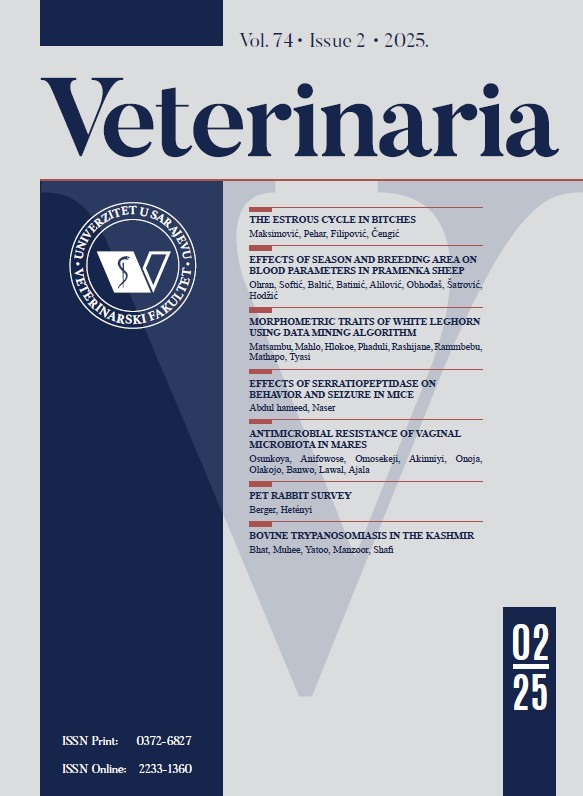A retrospective study on viscera condemnation in small ruminants due to parasitic infections and its economic implications in Ilorin, Nigeria
Keywords:
cysticercosis, fasciolosis, goats, Kwara State, oesophagostomosis, sheepAbstract
Parasitic infections in small ruminants remain one of the major means of economic loss over the world. Abattoir records from the carcasses and viscera inspection are important avenues of monitoring disease conditions, determining possible trends and losses due to diseases. The aim of the present study was to determine the prevalence and economic implications associated with parasitic infections of small ruminants based on the records from the slaughterhouses in Ilorin over a ten-year period. Records of parasitic diseases detected in sheep and goats at slaughter based on daily inspection and carried out by at least one qualified veterinarian in the major abattoirs in Ilorin was retrieved. Of the 64,125 slaughtered sheep, the viscera from 179, 105 and 162 of them were condemned based on fasciolosis, cysticercosis and oesophagostomosis, respectively. The prevalence of fasciolosis, cysticercosis and oesophagostomosis based on viscera condemnation in goats was 0.23% (349/148,887;95% CI = 0.21 – 0.26), 0.12% (173/148,887;95% CI = 0.10 – 0.13) and 0.15% (220/148,887;95% CI = 0.13 – 0.17), respectively. Seasons were significantly (P ≤0.05) associated with the occurrences of fasciolosis, cysticercosis and oesophagostomosis in small ruminants. A total of 339,950 Nigerian Naira (2,118.61 USD) and 558,450 Nigerian Naira (3,480.31 USD) was lost due to the condemnation of the viscera of sheep and goats, respectively. Conclusively, this study provides a baseline data for monitoring of small ruminant fasciolosis, cysticercosis and oesophagostomosis in Ilorin and Nigeria.
Downloads
Published
How to Cite
Issue
Section
License
Copyright (c) 2020 VETERINARIA

This work is licensed under a Creative Commons Attribution 4.0 International License.








